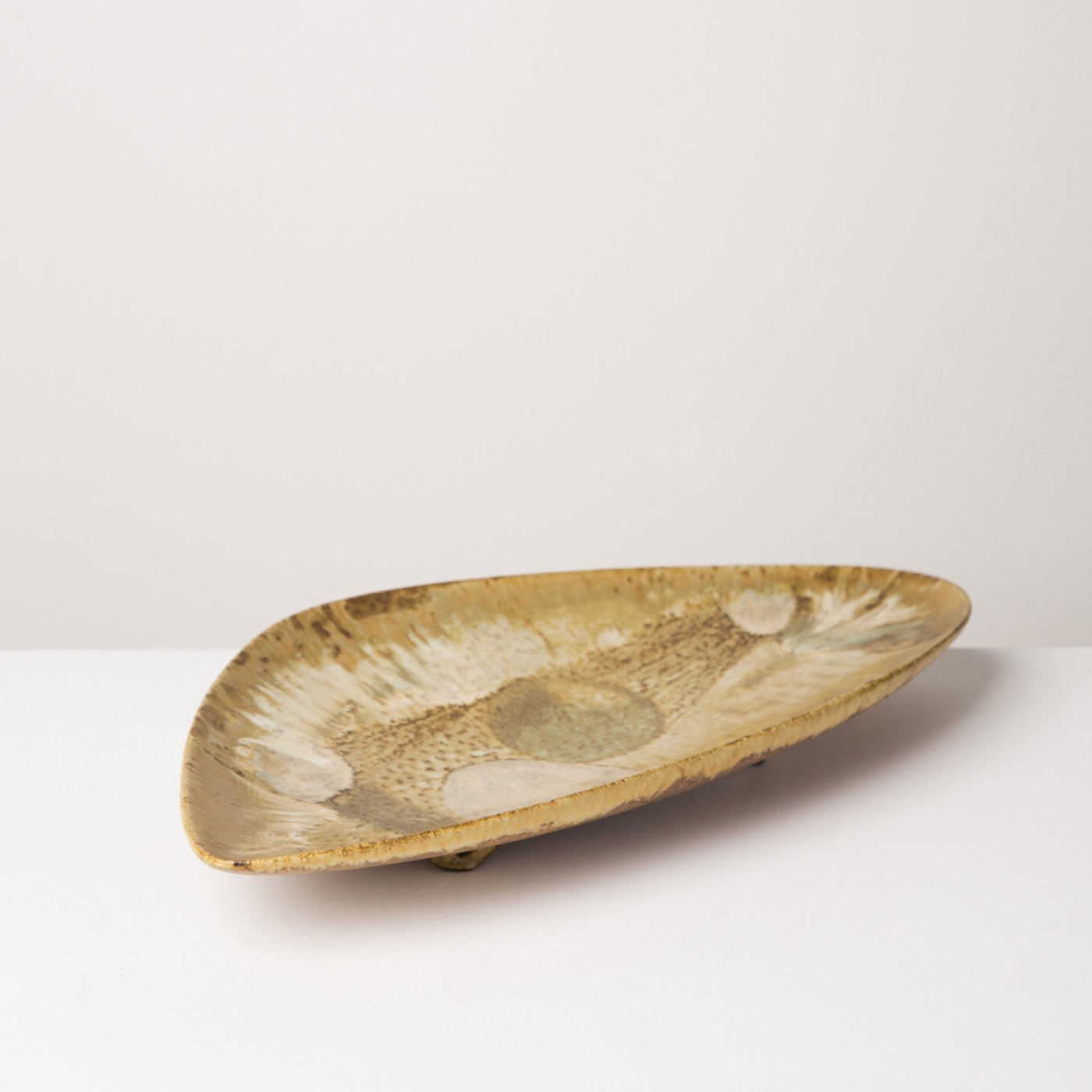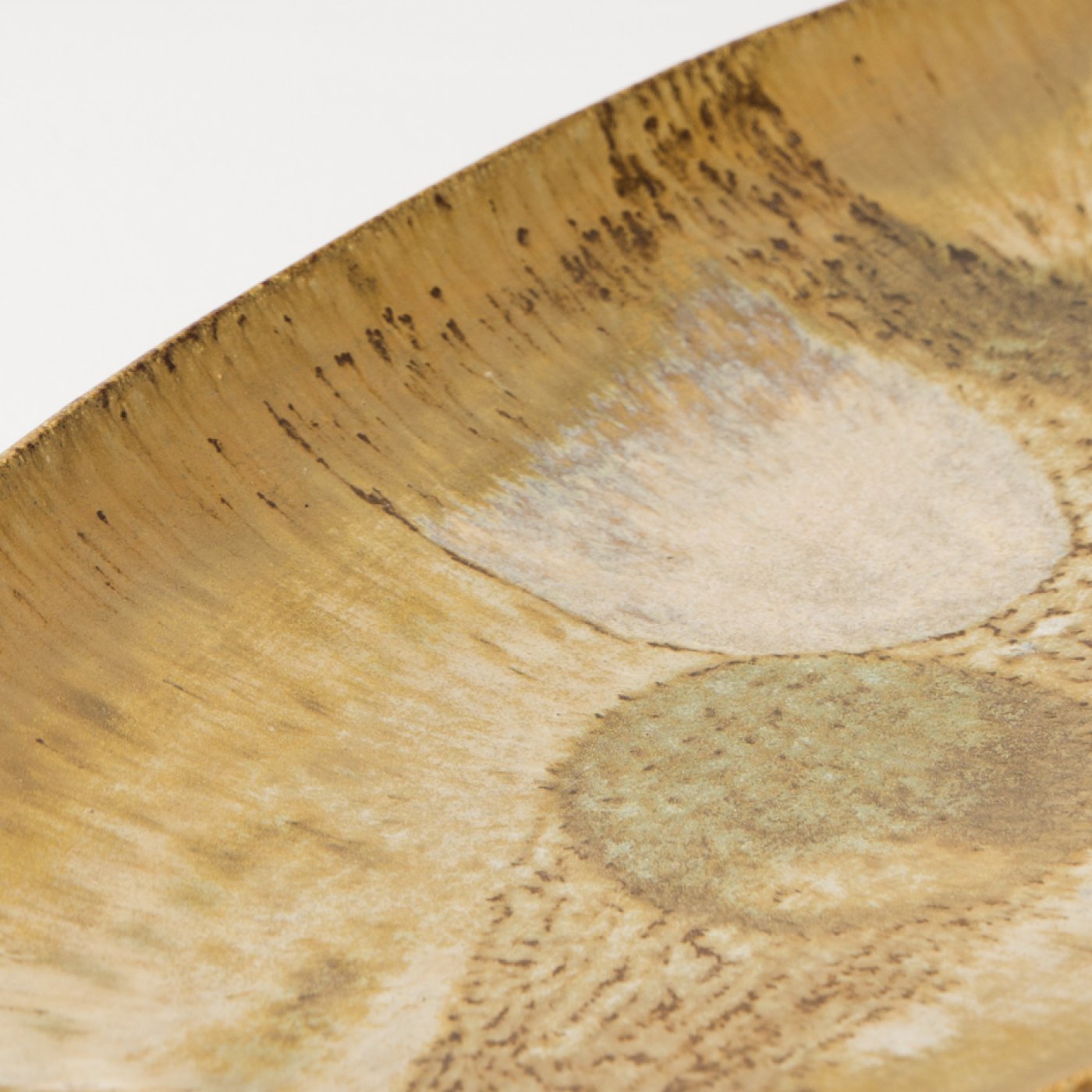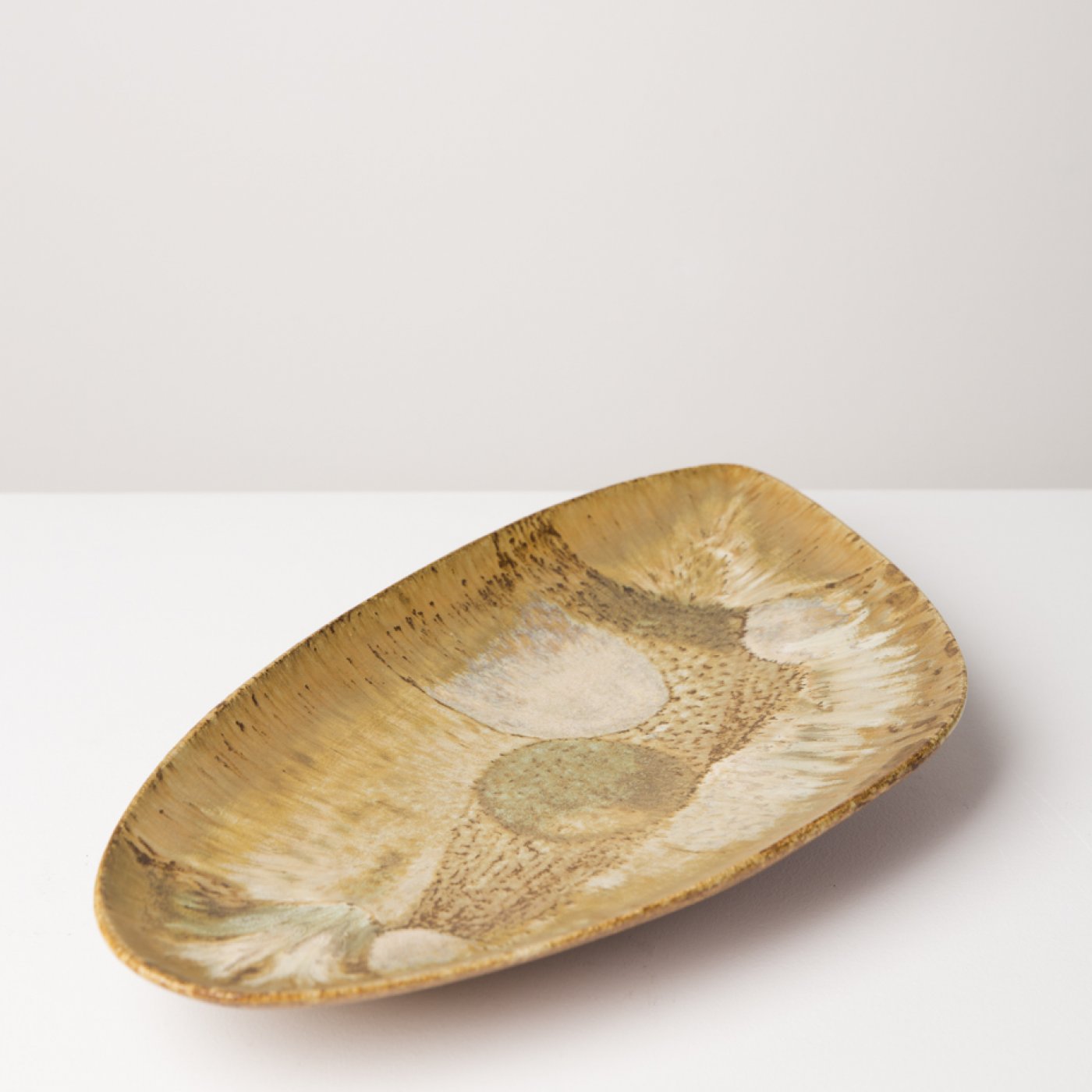Carlo Zauli
Vassoio
1956 circa
6 × 45 × 25 cm
6 × 45 × 25 cm
About the artist
Carlo Zauli (Faenza, 1926-2002) is one of the great names in post-war Italian sculpture.
Like other masters of previous generations, from Martini to Fontana and Leoncillo, his technical training was in the field of ceramic art. Zauli moved away from its formal principles in the 1960s, however, when his work moved towards a complex form of sculptural research of great expressive richness.The shift from informal territories towards a reasoning about geometrical forms as rhetorical structures brought him into the heart of the sculptural debate of those years. The solo exhibition at the Montenapoleone in 1957 fitted in perfectly with other works that were part of a trend towards an integration of the arts (frieze for the palace in Baghdad, 1958; frieze for the government printing office in Kuwait City, 1961; participation in the Milan Triennales in 1954, 1957, 1964 and 1968) and with his close friendship with artists like Fontana, Valentini, Pomodoro, and Spagnulo.In the late 1960s his sculpture started entering intricate, problematic areas in which the formative disposition of matter, the relationship between the substance and skin of the sculptural body, the dialectic between biomorphism and geometry, and the structural behaviour of form all came to the fore.Together with great solo exhibitions (Musées Royaux d’Art et d’Histoire in Brussels and Hetjens-Museum in Düsseldorf, 1972; a travelling exhibition in Osaka, Tokyo, Nagoya, and Kyoto, 1974; and another in Fukuoka, Tokoname and Tokyo, 1981) and works of architectural integration, he also put on a number of solo exhibitions in galleries and public spaces. These gave his work truly international scope, as can be seen in the recent travelling retrospective held in Kyoto, Gifu, Tokyo, and Hagi, 2007-2008. His work has been showed in the last edition of ArtVerona (2016) by Officine Saffi. Carlo Zauli died in 2002 and his pieces are in private collections and in over forty museums around the world.
Like other masters of previous generations, from Martini to Fontana and Leoncillo, his technical training was in the field of ceramic art. Zauli moved away from its formal principles in the 1960s, however, when his work moved towards a complex form of sculptural research of great expressive richness.The shift from informal territories towards a reasoning about geometrical forms as rhetorical structures brought him into the heart of the sculptural debate of those years. The solo exhibition at the Montenapoleone in 1957 fitted in perfectly with other works that were part of a trend towards an integration of the arts (frieze for the palace in Baghdad, 1958; frieze for the government printing office in Kuwait City, 1961; participation in the Milan Triennales in 1954, 1957, 1964 and 1968) and with his close friendship with artists like Fontana, Valentini, Pomodoro, and Spagnulo.In the late 1960s his sculpture started entering intricate, problematic areas in which the formative disposition of matter, the relationship between the substance and skin of the sculptural body, the dialectic between biomorphism and geometry, and the structural behaviour of form all came to the fore.Together with great solo exhibitions (Musées Royaux d’Art et d’Histoire in Brussels and Hetjens-Museum in Düsseldorf, 1972; a travelling exhibition in Osaka, Tokyo, Nagoya, and Kyoto, 1974; and another in Fukuoka, Tokoname and Tokyo, 1981) and works of architectural integration, he also put on a number of solo exhibitions in galleries and public spaces. These gave his work truly international scope, as can be seen in the recent travelling retrospective held in Kyoto, Gifu, Tokyo, and Hagi, 2007-2008. His work has been showed in the last edition of ArtVerona (2016) by Officine Saffi. Carlo Zauli died in 2002 and his pieces are in private collections and in over forty museums around the world.



